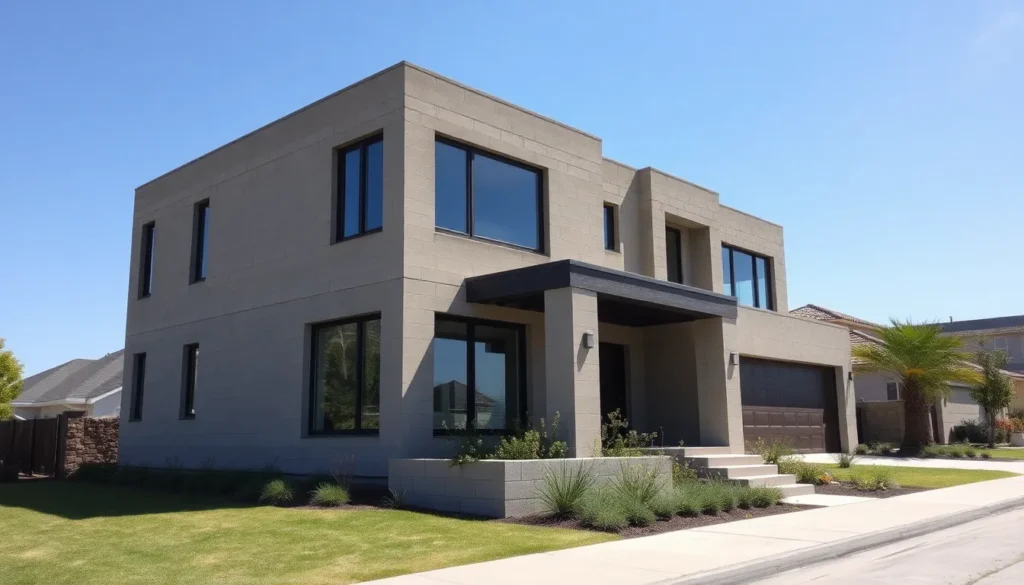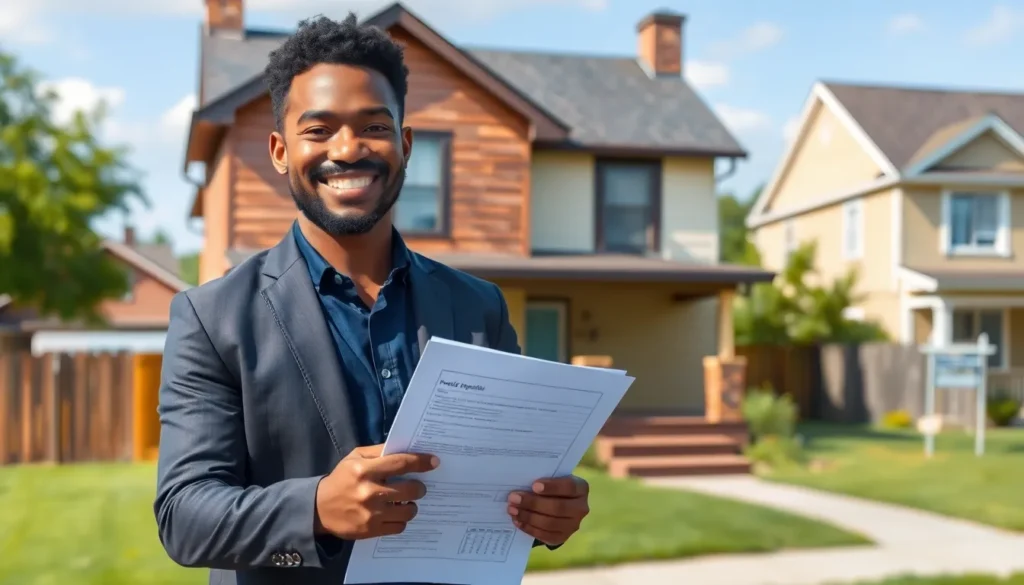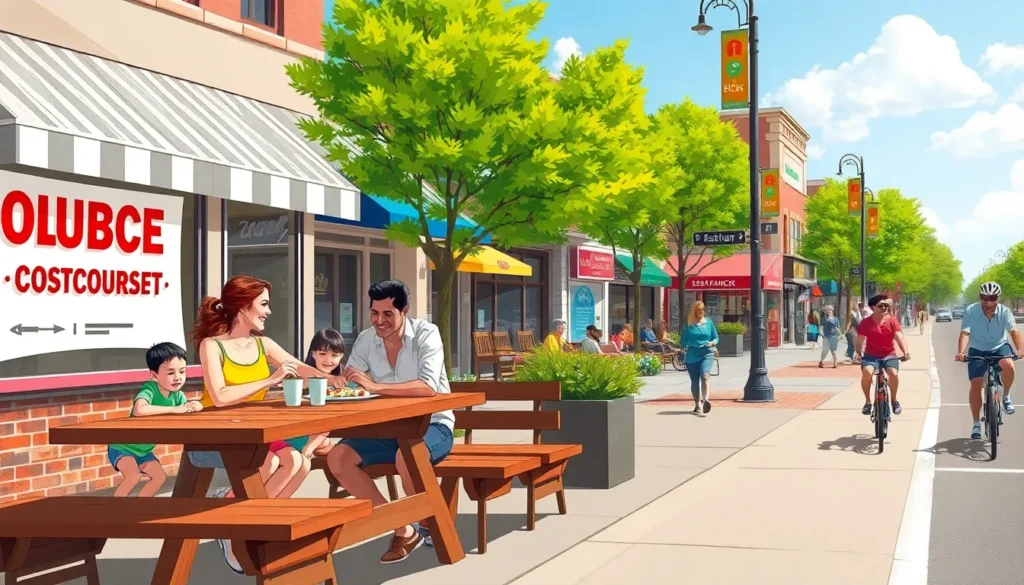Buying a home can feel like navigating a labyrinth while blindfolded. With so many steps involved, it’s easy to get lost in the maze of paperwork, inspections, and negotiations. But fear not! A well-crafted buying a home checklist is your trusty map, guiding you through the twists and turns of homeownership like a seasoned tour guide.
Table of Contents
ToggleUnderstanding the Buying Process
Navigating the home buying process involves several key steps. Each stage can impact the outcome, so understanding them is essential.
Steps to Homeownership
- Determine Budget: Assess financial capacity to define an affordable price range.
- Get Pre-Approved: Obtain a mortgage pre-approval to clarify financing and strengthen bargaining power.
- Search for Homes: Explore listings, focusing on desired features and neighborhoods.
- Schedule Showings: Visit potential homes to gauge suitability and condition.
- Make an Offer: Submit a formal offer to the seller based on property’s value and market conditions.
- Conduct Inspections: Hire professionals to inspect the property and identify issues.
- Finalize Financing: Lock in a mortgage and complete all necessary paperwork.
- Close the Deal: Attend the closing meeting to sign documents and officially transfer ownership.
Importance of a Buying a Home Checklist
A buying a home checklist organizes tasks. It provides a clear roadmap, helping buyers avoid oversights during the process. Staying on track ensures critical elements, like inspections and negotiations, receive proper attention. Additionally, checklists highlight deadlines, making it easier to adhere to timelines. Preventing last-minute surprises also reduces stress. Effective checklists serve as a reference throughout the journey, empowering buyers to make informed decisions.
Preparing for Your Home Search

Preparing effectively enhances every aspect of the home buying experience. Following a structured approach streamlines the process and makes it manageable.
Setting a Budget
Establishing a budget is crucial before diving into home listings. Identify all potential costs, such as down payments, closing fees, and yearly property taxes. Analyze monthly expenses to ensure comfortable mortgage payments. Consider additional costs like home maintenance and utilities. Tracking these figures ensures realistic expectations and financial security during ownership. Buyers should frequently revisit their budget as financial situations evolve and new priorities emerge.
Getting Pre-Approved for a Mortgage
Securing mortgage pre-approval provides a competitive edge in the housing market. Begin this process by gathering necessary documentation, such as income statements and credit information. Lenders evaluate this data and determine how much financing is available. Pre-approval also clarifies interest rates along with potential monthly payment amounts. A pre-approval letter strengthens offers and signals credibility to sellers. It encourages timely action in a fast-paced market, enabling informed decisions.
Creating Your Buying a Home Checklist
A buying a home checklist streamlines the process and clarifies priorities. Organizing tasks makes handling the complexities easier.
Must-Haves vs. Nice-to-Haves
Identify must-haves first to maintain focus during the search. Examples of must-haves include a certain number of bedrooms, a specific location, and essential features like a garage. Nice-to-haves can enhance comfort but are not essential, such as a swimming pool or a spacious backyard. Prioritize these elements to help narrow down options effectively. Buyers often find it beneficial to create a scoring system for each property, rating how well each home meets these criteria. This structured approach allows for clear comparisons when making decisions.
Neighborhood Considerations
Evaluate neighborhood features to ensure a suitable living environment. Proximity to schools, parks, and shopping centers often influences a home’s desirability. Safety ratings and community atmosphere play significant roles in long-term satisfaction. Researching local amenities and services is essential for understanding the broader context of a potential home. Consider factors like traffic patterns and public transport accessibility. Engage in discussions with residents to gain insider insights about the area. Prioritizing these aspects can ultimately lead to a more informed and contented homeownership experience.
The Home Inspection Process
Home inspections play a critical role in the home buying journey. Buyers uncover potential problems that may not be visible during a showing.
What to Look For
Inspectors typically assess major systems such as plumbing and electrical. They check the foundation, roof, and various surfaces like floors and ceilings. Structural integrity holds significant importance; signs of water damage or mold can indicate severe issues. Buyers should also evaluate appliances included in the sale, ensuring they’re in working order. Safety elements, including fire alarms and carbon monoxide detectors, deserve attention as well.
Estimated Costs of Repairs
Repair costs vary based on the severity and type of issue detected during the inspection. Minor repairs, such as painting or replacing fixtures, may range from $100 to $500. More extensive projects, like roof replacement or electrical system upgrades, can significantly increase expenditures, sometimes exceeding $10,000. Buyers must budget for potential repairs when making an offer, as inspection findings influence the final price. Negotiating repair costs or requesting seller concessions becomes a crucial strategy to minimize financial burden.
Closing the Deal
Closing the deal marks the final stages of the home buying process. This phase involves understanding essential costs and finalizing mortgage details.
Understanding Closing Costs
Closing costs typically range from 2% to 5% of the home’s purchase price. These costs encompass various fees, including loan origination, title insurance, and appraisal fees. Buyers must account for items such as property taxes, homeowner’s insurance, and recording fees. Familiarity with these expenses prevents surprises and aids in budgeting. It’s advisable to request a detailed breakdown from the lender upfront. Understanding these components aids buyers in allocating their funds effectively while keeping financial goals in sight.
Finalizing Your Mortgage
Finalizing a mortgage involves verifying the terms and conditions agreed upon earlier in the process. Buyers need to ensure all documentation is accurate and complete. Engaging with the lender can clarify any lingering questions regarding payment structures, interest rates, or terms. Securing a clear understanding of the mortgage agreement enables informed financial planning. Coordination with the lender also streamlines the closing timeline. Once approved, timely communication helps avoid potential delays, ensuring a smooth transition into homeownership.
Navigating the home buying process can feel overwhelming but having a well-structured checklist makes it manageable. This essential tool not only keeps buyers organized but also helps them stay focused on their priorities. By understanding each step from budgeting to closing, buyers can make informed decisions that lead to successful homeownership.
Preparation is key in this journey. By distinguishing between must-haves and nice-to-haves and thoroughly evaluating potential properties, buyers can find a home that truly fits their needs. Engaging in discussions with local residents and conducting detailed inspections further enhances the experience. With the right approach and resources in hand, the path to homeownership becomes a rewarding adventure.













